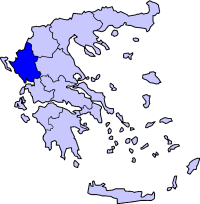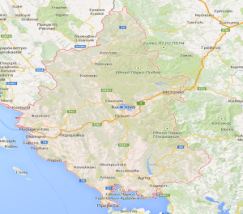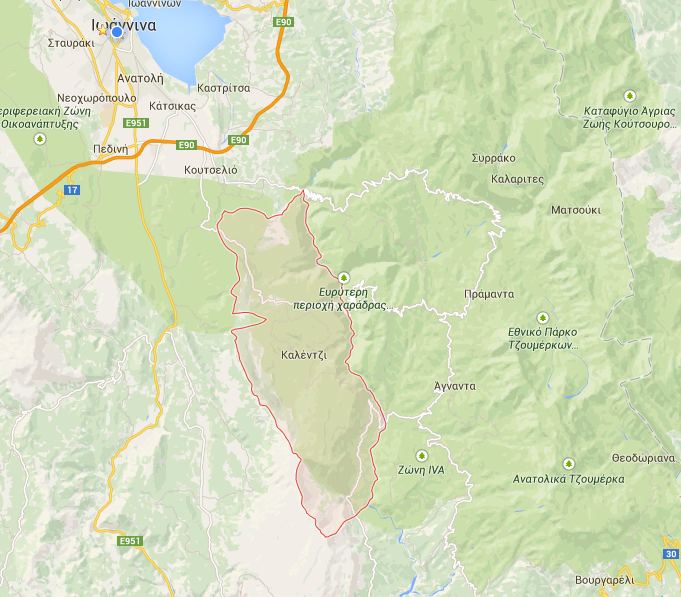
Monuments of Epirus
Katsanochoria
Prefecture of Ioannina
St Nicholas Monastery (alternatively called Spanos Monastery or Philanthropene Monastery)
The Philanthropene Monastery (or Spanos Monastery) was built in 1292 by Michael Philanthropenos, an offspring of the prominent and noble Byzantine family originating from Constantinople. The monastery lies to the south-westernmost part of the Island of the lake of Ioannina. Built on a ground elevation, it is at a higher attitude, as compared with the rest of the Island’s monasteries, and is adjacent to Ntelios Monastery. Together with the other six monasteries of the Island, they form a small monastic center, which has existed since the times of the Despotate of Epirus, reaching its heyday in the 16th century. During the 16th century, the town of Ioannina developed into the most significant cultural and economic center of north-western Greece. Naturally, the Lake Pamvotis’ Island benefitted greatly from this rise in culture and economy.
The main church of the Monastery (Catholicon) is a single-naved basilica, with a dome. The catholicon’s mural paintings were created in three distinct phases and form a unique sample of the 16th century art and, in general, of post-byzantine art.
The initial mural decoration dates back to 1531/2. The first mural paintings, created on monk Neophytos Filanthropenos’ initiative, are a worthy representative sample of art in the first half of the 16th century. Their painter remains unknown up to present, as no inscription bearing his name, has survived.
According to the church’s dedicatory inscription, the monastery was renovated in 1541/2 and the main church’s and narthex’s wooden roof were replaced with domes. As stated by the inscription, the renovation was assumed by the monk Joasaph Filanthropenos. It was during this phase that the iconographic decoration was expanded, covering the lunettes and the arcs of its western and eastern walls as well as the narthex’s largest part. Apart from these, the mural compositions of the domes are also considered to belong to this second phase of mural decoration.
In spite of the fact that the decoration of 1541/2 – like the first one of 1531/2 – is not signed by an artist, it is attributed to the inspired artist, Francos Katelanos, the most typical representative of the “northwestern Greece school”. Joasaph’s role in selecting the artist and in directing him, as regards the thematic coherence of the mural decoration, is worthy of note. Interestingly, the 1541/2 decoration follows the style of the initial one, contributing to a concrete conclusion of the iconographic program.
During the third and last phase of the decoration, in 1560, all three outer narthexes were decorated. The dedicatory inscription informs the reader that, during that phase, the outer three narthexes were renovated and decorated from the very beginning. The third phase is directly linked to the painters Frangos and George Kontares from Thebes, who assumed the task of decorating the narthexes’ interior surfaces.
It shouldn’t be difficult for the visitor to grasp that the mural decoration of the Philanthropene Monastary, in its totality, is a monument of high quality art and a milestone for post-Byzantine art, just by sheerly looking at the murals and at the width of their iconographic program.
Images














